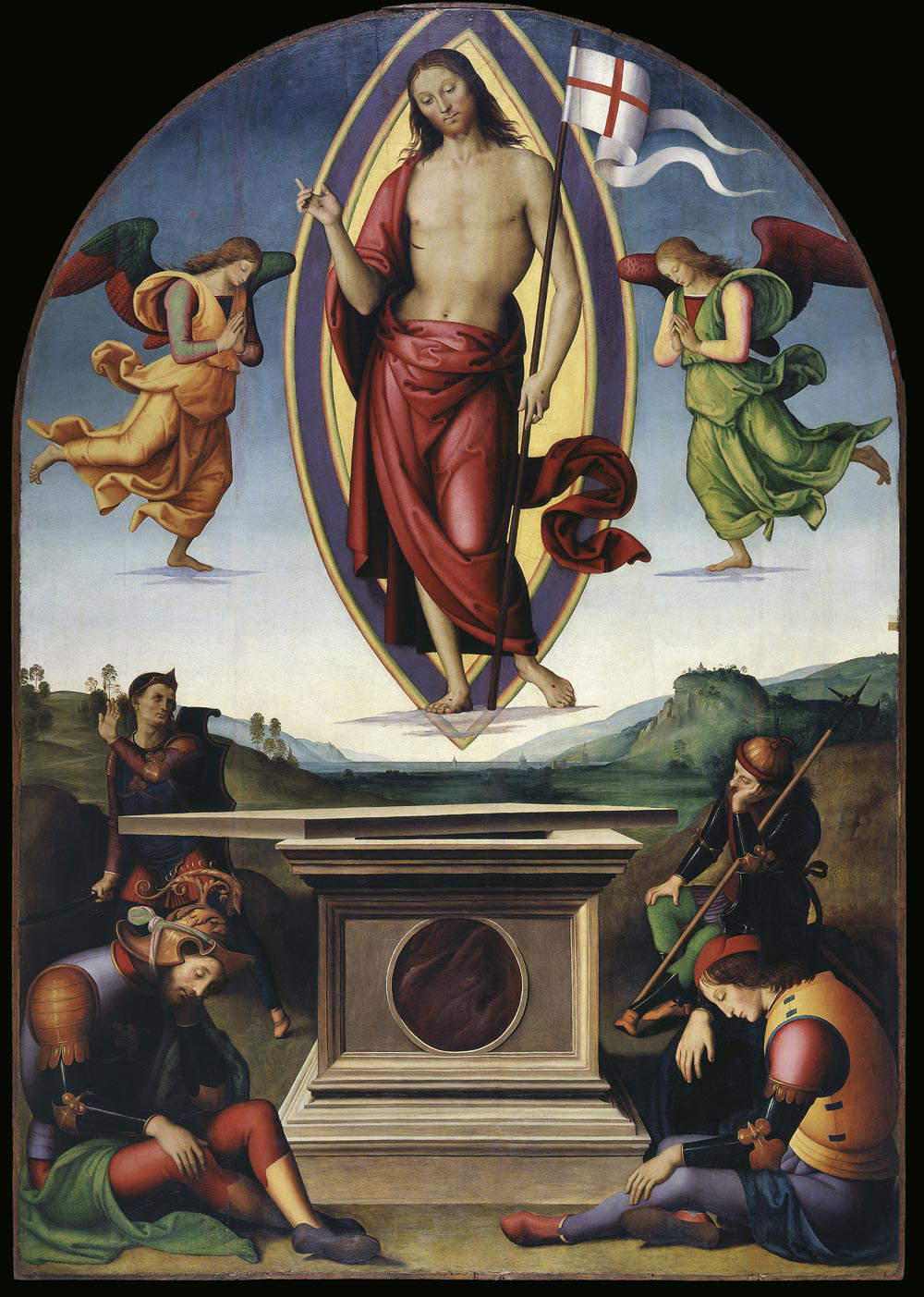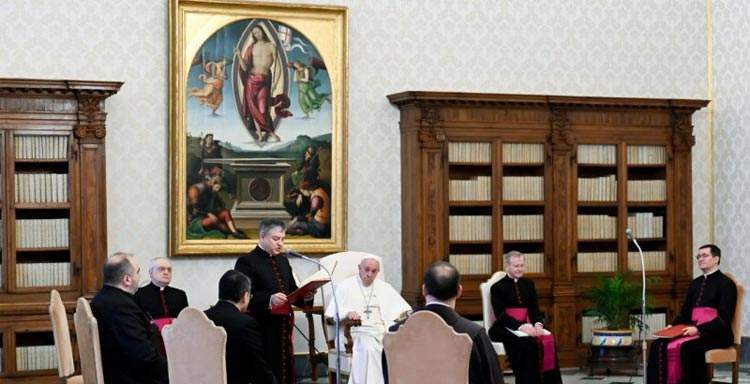We have always been accustomed to seeing it behind the pope’s back during visits by heads of state: now, Perugino’s Resurrection , the work by the great Renaissance artist usually kept in the pope’s private library at the Apostolic Palace, is finally going on display, on the occasion of the 500th anniversary of the death of Pietro di Cristoforo Vannucci, known as Perugino (Città della Pieve, about 1450 - Fontignano, 1523). In fact, the altarpiece is being displayed at the Vatican Museums in an exhibition that reintroduces to the attention of the general public, from June 28 to Sept. 15 exceptionally in the Vatican Pinacoteca, a painting that is almost never seen and yet in its own way very much seen.
The Resurrection of Christ, was executed in 1499 for the family chapel of the wealthy merchant and landowner Bernardino di Giovanni di Matteo in the church of San Francesco al Prato in Perugia, a sort of pantheon of Perugia’s most illustrious Renaissance families (Raphael’s Pala Oddi and Pala Baglioni , executed for their respective families, were also kept here in ancient times). The artist was then almost fifty years old and engaged in numerous commissions, but the perfect functioning of the workshop allowed him to maintain a very high quality of production: Perugino was at the height of his fame and was considered one of the most important artists in Italy.

The panel was paid to Perugino 50 florins, including the frame (now lost), a not too high figure, which leads one to speculate on the involvement of the workshop during its execution. The completion of the work, from the date of the contract (dated March 2, 1499: the artist is cited as “spectabilis et excellentissimus pictor magister Petrus Christophori de Castro Plebis, civis perusinus”), had to take place within a tight time frame, perhaps already by 1500, a circumstance also demonstrated by reflectography that revealed how the painting faithfully follows the underlying design and how there are no traces of repentance.
“The quality of the painting,” explains Fabrizio Biferali, curator of the department for the art of the 15th-16th centuries at the Vatican Museums, "is very high, as is found, moreover, in all the works that came out of Perugino’s workshop around this date, and there appear elements of pure virtuosity such as the sepulcher all’antica taken frontally and with the lid partly open and painted with an extraordinary perspective foreshortening, or the Roman soldiers depicted in the most disparate poses, some in the act of fleeing in fear and others asleep in a deep slumber, but all depicted in multicolored military clothing typical of the period. Hieratic and monumental, flanked by two angels in prayer, the risen Christ stands out against a sky that transitions from lapis lazuli blue to white, echoing such slightly earlier works by Perugino as theAssumption and Resurrection of the Polyptych of St. Peter, the latterthe latter already endowed with the foreshortened sepulcher motif, and the Transfiguration of the Collegio del Cambio, while the hilly landscape in the background is comparable to other Umbrian landscapes painted by the master in those years."
The French Armada took it from the church in 1797, and the altarpiece was displayed in Paris, at the Musée Napoléon, only to be returned to the pope in 1815 after the fall of Napoleon and the Congress of Vienna (it was handed back to Antonio Canova , who had been appointed Inspector General of Fine Arts and was tasked with bringing as many works as possible back to the Papal States). One hundred and fifty years later, it was Paul VI who wanted the painting in his private library by taking it from the Vatican Pinacoteca.
Since then, except for the brief interlude of the restoration in 2000-2002 and the subsequent exhibition in the Salone Sistino, the Resurrection has remained in that studio of the Papal Apartment of Representation, inaccessible to most, but continually recurring in official photographs and television footage. A customary backdrop, in the presence of which, for almost sixty years, visiting no less than four Pontiffs, the great of the Earth, Heads of State and Government, distinguished personalities and various celebrities have paraded. It is therefore a truly unique and unmissable opportunity to visit, before the work regains its privileged place in Pope Francis’ private library.
 |
| The pope's Perugino on display: the Resurrection on display at the Vatican Museums |
Warning: the translation into English of the original Italian article was created using automatic tools. We undertake to review all articles, but we do not guarantee the total absence of inaccuracies in the translation due to the program. You can find the original by clicking on the ITA button. If you find any mistake,please contact us.